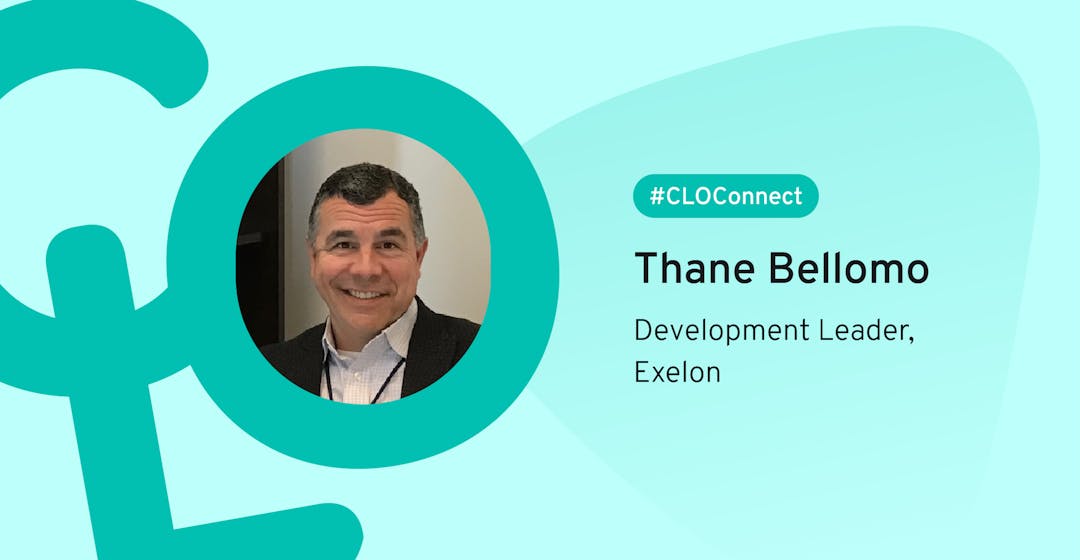
How the Largest Nuclear Fleet in the US Fuses Technical Expertise with People Strategy
One of the toughest jobs in L&D is matching a company’s existing culture with the right approach to organizational development. If there are any gaps or misalignments here, it can have a huge effect on your performance.
For companies with an established culture of operational excellence, this choice is even more critical. When something is working well, you need to nurture it and avoid getting in the way.
Recently, I sat down with Thane Bellomo, Leadership and Organizational Development Leader at energy provider Exelon, to talk about how he has shaped his L&D approach to highlight the company’s proven strengths, and what his people strategy means in practice.
We started off with a discussion about the high stakes in the nuclear energy sector.
‘Every task, every shift, every day’ - what operational excellence means to Exelon
Details are important in every industry. But for Exelon, the largest nuclear fleet in North America, a high standard of performance is critical.
“We have 12 nuclear power plants spread out across the Mid-Atlantic, the Northeast, and the Midwest,” says Thane. “Our work requires a focus on perfect execution for every task, every shift, and every day. It’s crucial for us to maintain this level of operational excellence.”
“As an organizational development consultant, I’ve worked in healthcare, manufacturing, and government. These organizations often have a very people-centered focus, with less emphasis on oversight, accountability, and process. But the nuclear industry is a different story.”
So, what has Thane learned after ten years at Exelon? “My current role has shown me what is possible when you marry our strong technical oversight with the right focus on people.”
Related: 3 Factors Changing Corporate Training Forever (Plus How L&D Teams Can Adapt)
You can never have enough expert insights! Check out our ebook to find out How L&D Can Help You Build a Strong Company Culture
Combining operational excellence with a focus on people
Combining Exelon’s technical work culture with the right focus on people strategy is a big undertaking. As Thane explains, it hasn’t always been easy.
“When I first started, as much as we were focused on operational excellence, we were missing some conversations around talent development,” he says. “We weren’t focused on how people worked together beyond the execution of a particular process.”
“I noticed that we didn’t have a common vocabulary on what excellence in leadership or team effectiveness looked like. We had a set of values, but these were difficult to quantify. Take inclusivity, for example. How do we measure that? How can we make sure we’re improving?”
For Thane, the answer was to set some specific guidance. “We started by defining a set of core competencies within each of our values. Then, we developed behavioral anchors against each competency, not only in terms of leadership, but in terms of team effectiveness. These formed the basis of our assessment, and gave us something to improve upon over time.”
With such a big shift, it was critical to get Exelon’s leadership on board from day one.
I noticed that we didn’t have a common vocabulary on what excellence in leadership or team effectiveness looked like. We had a set of values, but these were difficult to quantify. Take inclusivity, for example. How do we measure that?
Encouraging leadership to use a shared vocabulary
“In a nuclear power plant, the most important team is the leadership team,” says Thane. “We needed to measure how they worked together against a set of clear competencies. Then, we asked every one of our teams to create action plans to close any gaps.”
Another crucial step in measuring leadership effectiveness? Building a shared vocabulary.
“Over time our leadership teams started to use a common vocabulary, with a shared sense of what good performance looks like,” says Thane. “This way, we could talk about progress in defined terms, with the same accountability and oversight we use in our operational processes.”
As Thane explains, this process was more than just a one-man job. “It took some time to acculturate this approach within Exelon. There are a lot of people in the industry and in my organization that have contributed to turn this approach into a wider set of standards.”
Related: 3 Data-Based Ways to Prove Training ROI (+ Free Training ROI Calculator)
“Over time our leadership teams started to use a common vocabulary, with a shared sense of what good performance looks like. This way, we could talk about progress in defined terms, with the same accountability and oversight we use in our operational processes.”
Drawing from trusted models to build the right people strategy
For Thane, finding the right approach to Exelon’s people strategy meant looking around at what was working already, and repurposing some familiar technical models.
“I wanted to take the frameworks the organization understood and create processes and systems that aligned with how we do our business,” he says. “In our case, nuclear energy is a very process and oversight-driven sector. People are used to that model, and they trust it.”
“My job was to take the model the company is used to and integrate a focus on talent management and leadership development. You want to draw from the processes people are used to, so that people can adopt and embrace them much more easily.”
The solution? Applying Exelon’s Management Review Meetings to talent management.
Exelon’s solution: Talent Management Review Meetings (MRMs)
To combine the right people strategy within Exelon’s existing focus on operational excellence, Thane repurposed the company’s Management Review Meetings, or MRMs, to create Talent MRMs. Using Talent MRMs gave him three key advantages.
1: MRMs are a well-known process in the nuclear industry
“In the nuclear industry, there’s an MRM for everything,” says Thane. “Operations, performance improvement, engineering, safety, you name it. These meetings are about finding gaps in our performance, making plans to close those gaps, and measuring our progress over time.”
“People know what to expect from the MRM process. That’s why we created Talent MRMs.”
2: MRMs can highlight gaps in organizational strategy
“In MRMs, the job of executives is to challenge our plans and make sure everything holds together,” says Thane. “Having to defend a plan tells you where the gaps are, and highlights things you might not have thought of.”
“Creating Talent MRMs has helped us focus on our people processes. Now, we’re looking harder at our core competencies, including how we’re developing our talent pipeline, and how our teams can work together to share their skills.”
3: MRMs reinforce the importance of talent management
For Thane, using talent MRMs wasn’t just an efficient way to highlight performance gaps - it also demonstrated the importance of talent management. “The MRM format was something our teams could get their heads around. It gave us a methodology to apply rigor around our people processes, and it’s been instrumental in telegraphing to the organization what’s important.”
Having Talent MRMs tells our leaders they need to dedicate resources to people development. It has increased the quantity and quality of the leadership discussions by an order of magnitude over the last ten years.
Using deep questions to identify areas for improvement
As an L&D leader and coach, Thane has a dual role to play in Exelon’s Talent MRMs. “I’m coaching our executives, but I’m also coaching our organizational leaders. Some people are incredibly good at the operational side of the business, but they may not have the same depth of expertise with people strategy. So, I encourage them to ask five questions deep.”
“That’s how you avoid ambiguity as an organization and get to the real answers,” says Thane. “It’s how you understand why a team might not be functioning in line with our expected competencies, or why there might be gaps in your strategy or talent management. You need to ask for specific examples, such as individual development plans for high performers.”
One last tip from Thane? Get out in the field and see things first-hand. “If someone claims their teams understand the organization’s vision, but then the executives don’t get a consistent and clear response when they’re out there talking to people, you know you’ve got an issue. That’s the value of asking deep questions.”
Thanks again to Thane for taking the time to join me for this inspiring discussion!
While you’re here, check out my expert interviews with Theresa Cook of PwC Luxembourg on how she handles complex L&D demands, and Tuba Kazmi of Coca-Cola İçecek on how she nurtures a diverse workforce.
Want more peer insights on transforming workplace learning? Check out #CLOConnect, our interview series with top L&D leaders on driving growth and scaling culture through Collaborative Learning. You can subscribe (below 👇) to our weekly newsletter to receive our latest posts directly in your inbox.


